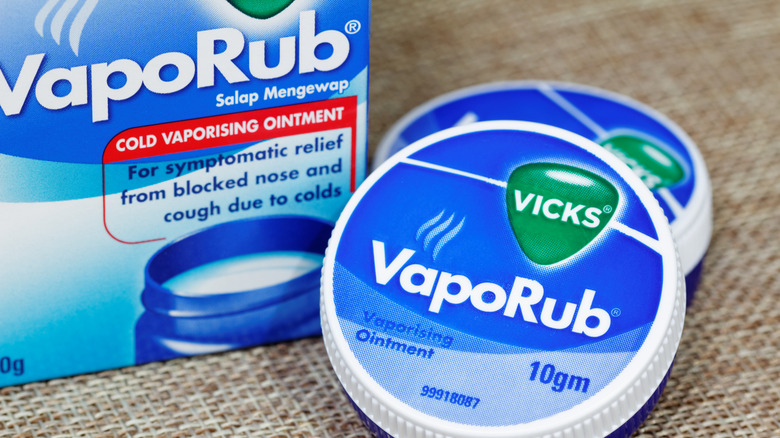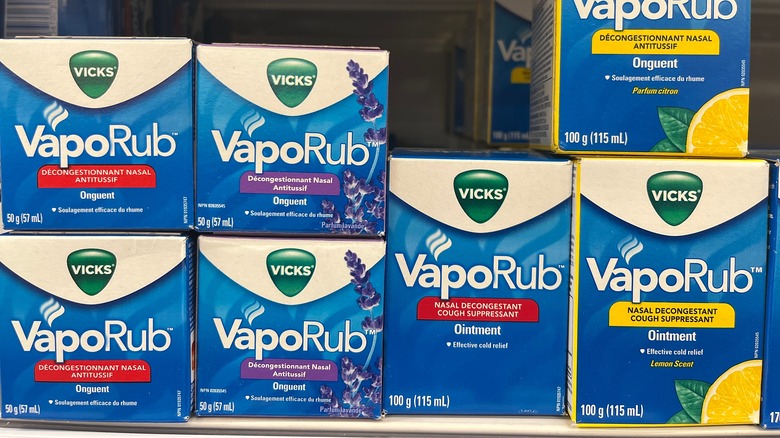Does Vicks Help With Congestion?
Vicks VapoRub is a popular home remedy and over-the-counter topical ointment made with camphor, menthol, and eucalyptus oil (via Mayo Clinic). It has long been used to help treat and relieve symptoms of the flu and the common cold, including cough, congestion, and runny nose. However, Vicks is not an effective nasal decongestant. While the ointment acts as a cough suppressant and can help create the sensation of breathing more freely, it can't actually help alleviate congestion.
"The scent of menthol in Vicks VapoRub triggers cold receptors in your nose and upper airway, where you sense temperature and smell," Dr. Satya D. Narisety, a clinical assistant professor in the Department of Pediatric Allergy, Immunology, and Infectious Diseases at Rutgers University, told Parents. "It doesn't actually open up airways or break up mucous, but the menthol does trick your brain into thinking your airways are opening up, and you're not so congested."
How to properly apply Vicks VapoRub
To create the illusion of breathing through an unclogged or uncongested nose, you must be able to properly inhale the menthol vapors of the ointment. Excluding the nose or nasal area, it's important to apply Vicks VapoRub to a place on your body that gives the perception of easier breathing (via Healthline). For best use, apply Vicks to your throat and chest area. You can apply the ointment up to three times a day as needed or as directed by a medical professional.
Whatever you do, however, don't put it in or under your nose. That's because the camphor in Vicks can be toxic if absorbed through the mucus membranes in the lining of the nose, especially for children, per Healthline. Putting Vicks too close to your nose can also lead to irritation and inflammation in the nasal passages, so it's best to avoid applying the ointment to your head or face.


